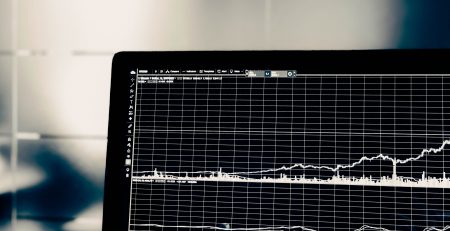What is the Golden Cross and Death in the Bitcoin Price Chart and How Do We Recognize It?
The intersection of Golden Cross and Death is the passage of short-term and long-term moving averages over each other in the Bitcoin price chart, which indicate a downtrend or uptrend in the long run.
Recognizing the mean of short-term and long-term volatility (MAs) when used in trading systems is important for both Cryptocurrencies and other assets.
The two rare but powerful signs that traders are looking for in charts are when the averages of short-term and long-term movements intersect.
When the short-term moving average crosses the long-term moving average, it is called the golden intersection, and when this short-term index falls below the long-term index, we will see the death intersection.
The Golden Cross and the death of many predicted the worst recessions of the last century; For example, declining markets in 1929, 1938, 1974 and 2008 were predicted by the intersection of death.
The important point is that these two intersections emphasize the strength of an initial trend and enable traders to be able to accurately detect price movements in severe Bitcoin fluctuations in one day as well as in consecutive days.
Golden Intersection

A gold cross occurs when the short-term moving average breaks the long-term moving average and when it does, it sends a message to traders that they should expect a strong uptrend for that asset.
There are two necessary conditions for a golden intersection to occur. The first condition is to be at the end of a sharp downtrend that is due to the fatigue of the sellers, which means that the pressure of the downtrend from the sellers in the market is reduced and the so-called other sellers are tired and willing to sell that asset. Do not have. The second prerequisite is that the short-term moving average cuts the long-term moving average upwards and is above it, which is usually the moving average for periods of 50 and 100 (or 200).
As shown in the green rectangle above, a golden intersection appeared on the Bitcoin Daily Chart in March, indicating a strong uptrend of $ 3,122, which we have been witnessing since December 15, 2018. .
The uptrend started on March 12 and led to a 260% price increase from $ 3,859 to close to $ 14,000 on June 26.
By comparing daily, weekly and monthly charts, it can be seen that the use of golden intersection in the analysis of high time frame charts is better recognizable and citationable.
Crossroads of Death

Opposite the golden intersection is the intersection of death, which occurs after the long-term fatigue of buyers, and the short-term moving average of an asset, the long-term moving average cuts it down and sits below it. The short-term moving average is usually the average of 50 periods and the long-term moving average is 100 (or 200) time periods.
On March 30, 2018, when the 50-day moving average of Bitcoin crossed the 100-day moving average and fell below it, it was showing a sharp downward trend, followed by a price from $ 6,850 to $ 3,122. It fell until December 15.
Similar to the Golden Intersection, in the case of the Death Intersection, they are better recognizable and usable at higher timeframes, as the general trend needs to be confirmed and overnight trend changes have no effect.
On the other hand, you should know that the intersections of gold and death are not perfect patterns, but using them along with other indicators can be a valuable tool to help you correctly identify the direction of prices in the volatile market of various assets around the world.













Leave a Reply